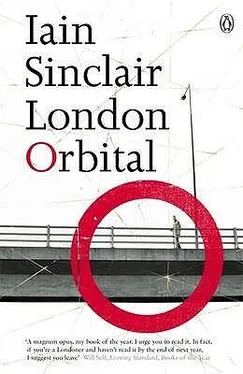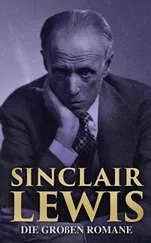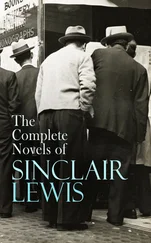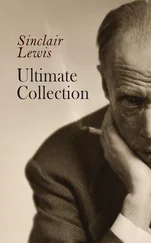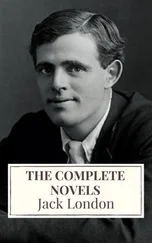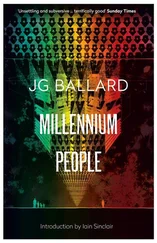‘CALMER WATERS. A riverside lifestyle to enjoy at your leisure. Imagine living just 45 minutes from the city, yet a million miles away. In the grounds of an ancient Abbey, framed between the River Thames and acres of mature woodland. Ingress Park is the reality, CREST NICHOLSON. The Hallmark of a Classic Home .’
This is how good fiction works: by transposition, a code any half-bright idiot can break. Purfleet is not (in absolute terms) where Carfax is — but where you see it from. The switch: subject and object. You learn to empty yourself into the view. At privileged viewing points, the observer vanishes: the fictional residue remains, coheres. It’s there even when you don’t see it.
The Queen Elizabeth II Bridge, curved and minimalist, is highly strung. Hawsers fade into the sky. A long black line splits the cloud, flashes of movement. White tuning forks anchor a structure that can’t support the weight. The bridge is free-floating. This is the only place where the orbital motorway lives up to its metaphoric responsibilities: grandeur, lift — surprise.
Vampires, according to Stoker’s mythology, have problems crossing water. Count Dracula, open-eyed in his coffin, is trapped on board his vessel — until the ship runs aground, or the tide turns. ‘He went south from Carfax,’ says the vampire hunter Van Helsing, ‘that means he went to cross the river, and he could only do so at slack of tide.’ The Queen Elizabeth II Bridge, scarlet lights at dawn and dusk, is a ladder for vampires. A ladder on which blood is turned into oil. And back again. A motorcycle outrider with BLOOD on his vest.
We’re advancing through a cyclorama of storage tanks, rattling chutes, private jetties, CCTV, razor wire, TANK TERMINAL. POSITIVELY NO ADMITTANCE/EXCEPT ON BUSINESS/SMOKING AND NAKED/LIGHTS FORBIDDEN/WEST THURROCK OIL TERMINAL. Thurrock on the east side of the bridge, Purfleet on the west: oil everywhere. The fiefdom of the Bush boys: Exxon, Esso. (Enron, Energy: an E-scape loud with entropy.) This is where the fuel protesters, farmers and long-distance hauliers staged their protest. Stop the distribution. Barricade the gates.
Rank upon rank of brilliant blue tractors. Waiting for export. A lake of black oil in the place of Carfax Abbey. But Stoker’s themes are still active: immigration, storage, distribution. The motorway brings in the container-stacked stowaways who will be stored in empty hospitals and windowless warehouses, while they wait for dispersal. (The Roumanian Dracula smuggles himself on to English soil in the guise of a black dog.)
Storage is the major downriver industry: human, industrial, retail landfill. Petrol stations all over the south-east are supplied from Purfleet, night-tankers roll in convoys from the gate. Dracula laid down the paradigm: fifty heavy coffins of Transylvanian earth to be distributed across London.
Hieroglyphic entries in thick, half-obliterated pencil… the destinations of the boxes. There were, he said, six in the cartload which he took from Carfax and left at 197, Chicksand Street, Mile End New Town, and another six which he deposited at Jamaica Lane, Bermondsey. If then the Count meant to scatter these ghastly refuges of his over London, these places were chosen as the first of delivery, so that later he might distribute more fully.
The Count recognises that property speculation, an adequate portfolio, begins in the badlands: Purfleet, Mile End New Town, Bermondsey. Dracula anticipates the boys in braces, Thatcher’s bluenosed-sharks, Blair’s private/public arrangements. Buy toxic. Buy cheap: madhouses, old chapels, decaying abbeys. Then make your play: storage and distribution.
Blood and oil. Carfax and Esso. S/O: Stoker’s Oracle. The politicians, money men and futures traders take their lead from yellow-cover romances of the previous century. ‘All that die from the preying of the Un-dead become themselves Un-dead, and prey on their kind. And so the circle goes on ever widening, like as the ripples from a stone thrown in water.’ Like the circle known as the M25, the orbital motorway.
We are standing under the bridge, admiring its curves and stanchions; taking our hit of noise, the stink of heavy oil, paper-pulp rotting in rain. Having set ourselves on the river path, we can’t get off. We can’t break through to the road. We are obliged to track alongside the Esso drums, to wave at cameras. A Chinese security guard barely understands our question: ‘Purfleet?’ It means nothing to him.
Renchi stops, sits, to copy a dream into his spiralbound notebook. He summons another river, a yellow table: ‘a ritual I have forgotten’.
Beyond the Esso compound is a muddy paddock in which bales of yellowing pulp-paper have been stacked. I take the photograph. It’s my last, the lithium batteries are gone and there are no replacements to be had — unless we venture into the Lakeside retail park. A light steady drizzle falls as we get away, through a fence, across railway lines and into Purfleet, near the station.
One of the local Undead (fanged and carious) suggests a late-breakfast caff: TC’s. TC as in ‘Tank Cleaner’. Behind Purfleet station, you can see the chalk. Carved cliffs. Lorry parks. Portakabins. Hangars in which petrol-carrying tankers are hosed down. TC’s Diner, servicing this zone, is a good idea. The only alternative would be: STATION SPICE (Closed). A Tudor-beam pavilion, site-specific to the station, promising: ‘Authentic Indian Cuisine & Free Delivery’.
The hyper-authentic TC’s — net curtains, seaside bungalow fittings — offers shelter, a comfortable booth and a vegan breakfast for Renchi (which arrives without derision from the kitchen or laughter from the company). TC’s is Ur-Purfleet. Oil country catering: generous portions, choice of two red-top news comics, room to spread the maps and plot our reunion with the motorway.
With the second mug of coffee — tomato sauce and egg-splash blotted up on the final square of buttered toast — the walk settles. Conversation declines into satisfied burps. The memory of the morning is fresh and the rest of the day lies on the Formica, waiting to be plotted. We stare out at the rain, the black skies. I’m glad that I picked up another golfing umbrella.
Like Stoker’s zoophagus madman Renfield (in the Purfleet asylum), we look west. ‘It was a shock to me,’ Dr Seward wrote, ‘to turn from the wonderful smoky beauty of sunset over London, with its lurid lights and inky shadows and all the marvellous tints that come on foul clouds even as on foul water, and to realise all the grim sternness of my own cold stone building, with its wealth of breathing misery, and my own desolate heart to endure it all.’
My camera was out of action. From TC’s Diner, until I picked up a throwaway job in Aveley, I was relying on Renchi to keep the record. Our afternoon walk into Essex has a very different feel: when reconstructed from photographs that Renchi supplies, his duplicates. When I try to revive the fiction of that journey, I’m lost. I can’t go back into territory where I’m not responsible for laying down the markers.
Renchi is following his own undisclosed agenda. He’s not interested in signs, hoardings, graffiti: script. His photographs aren’t written. They have a fluid attitude to landscape and our movement across it; the odd thumb in the frame, or unexplained smear, is a bonus. An acknowledgement of the presence of the photographer. Renchi chases light: he starts shooting when it doesn’t register, the river before dawn. Sunbursts into the lens. The effect is more painterly. His prints have a green tinge.
I see that I was wearing a light green coat, a woollen cap. I’m brandishing that furled golf-umbrella like a magic wand, pointing, talking. Humping an awkward green rucksack, straps slipping from the shoulder. The physicality comes back, the heat of the wool. The steam that Renchi notes: from the Procter & Gamble smokestack, the tank-cleaning sheds. The casual way he lets a finger block off his composition, lets the viewer know he was there.
Читать дальше
